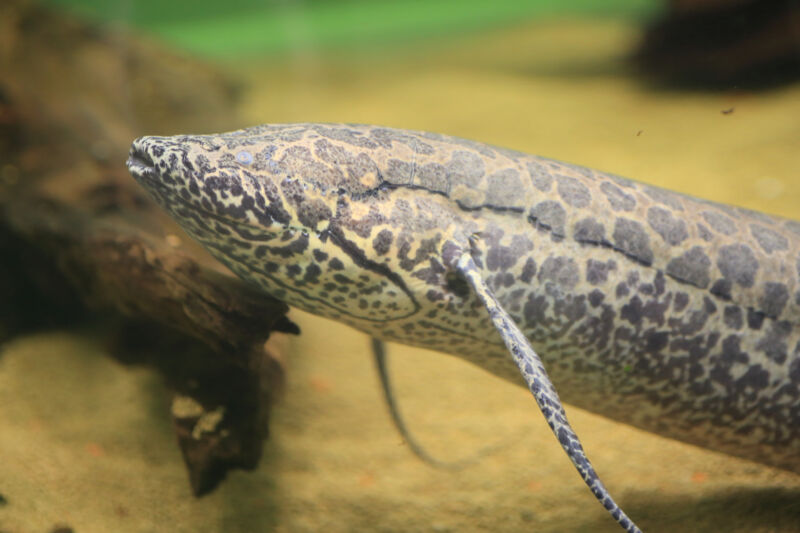The fish with the genome 30 times larger than ours gets sequenced

Enlarge / The African Lungfish, showing it's thin, wispy fins. (credit: feathercollector)
When it was first discovered, the coelacanth caused a lot of excitement. It was a living example of a group of fish that was thought to only exist as fossils. And not just any group of fish. With their long, stalk-like fins, coelacanths and their kin are thought to include the ancestors of all vertebrates that aren't fish—the tetrapods, or vertebrates with four limbs. Meaning, among a lot of other things, us.
Since then, however, evidence has piled up that we're more closely related to lungfish, which live in freshwater and are found in Africa, Australia, and South America. But lungfish are a bit weird. The African and South American species have seen the limb-like fins of their ancestors reduced to thin, floppy strands. And getting some perspective on their evolutionary history has proven difficult because they have the largest genomes known in animals, with the South American lungfish genome containing over 90 billion base pairs. That's 30 times the amount of DNA we have.
But new sequencing technology has made tackling that sort of challenge manageable, and an international collaboration has now completed the largest genome ever, one where all but one chromosome carry more DNA than is found in the human genome. The work points to a history where the South American lungfish has been adding 3 billion extra bases of DNA every 10 million years for the last 200 million years, all without adding a significant number of new genes. Instead, it seems to have lost the ability to keep junk DNA in check.